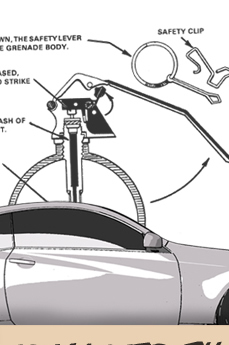| |
|
Get comfortable, this is going to be a lecture class; with notes, and lots of theory.
*Cry02 Nitrogen Cooling Systems will not be covered here, because you're better served by throwing money away on strippers you'll never take home*
Hopefully you understand what exactly Water/Meth and Nitrous do, and the basics of how they work. If you don't, feel free to jump on Google, or click on the "Learn Stuff" link above for a nutshell version with regard to how these things affect your particular car. I'm not going to link you to any manufacturers or distributors of water/meth or nitrous products; that would be like tossing my five-year old the keys to my explosives locker, and leaving him home alone with a box of matches while I go shop for booze at Safeway.
Water/Methanol Injection
This is pretty common stuff to the turbo crowd elsewhere in the world; SRT4s, Evos, STis, so on and so forth. Water/meth mixture can be purchased pre-mixed and the typical mixture is essentially a high octane (above 100) fuel additive with water in there to help keep things cool while your high octane fuel burns up super fast and generates a bit of extra heat. Kits will typically include nozzles that will dictate how much mixture is sprayed into the charge pipe ahead of the throttle; you will typically select the correct nozzle based on the mfr's instruction manual.
*You will want to change your oil a bit more frequently when using water/meth, as the methanol slips past most piston rings and works its way into your oil rather quickly*
One cool thing about water/meth is you will now be able to run more timing, and more boost (if you are going F/I) without knocking like you would if you tried to run hotter and faster on 91 pump only. One not cool thing is if you write your tune (Korean written/piggyback/etc) specifically for your motor while using water/meth, you are utterly hosed once your water/meth tank runs dry. You will be knocking to kingdom come. So either be sure you've got copius amounts of water/meth in your trunk to stay topped off, or invest in a quality standalone such as a Haltech/AEM/GReddy EMS/etc that can be programmed to swap maps once it detects water/meth is out (you'll have to purchase add'l sensors from the ECU mfr to allow the ECU to do this) and run off a 91 pump map while your tank is dry.
Water/meth is recommended for big power builds where you are looking to max everything out and you've punched your ticket everywhere else. On a small turbo or smaller build it will not offer particularly big gains but it will keep intake air cool at all times, so if you live in a place like Texas where life is pretty miserable six months out of the year, the simple fact that this will keep your IATs (intake air temperatures) at acceptable levels - is enough to motivate alot of people to just strap one on for good meausure.
Nitrous Oxide
*NITROUS IS NOT ADVISED WITH A STOCK CLUTCH DUE TO RAPID DESTRUCTION THEREOF UNDER AGGRESSIVE DRIVING*
On a stock motor, a maximum safe shot of 100 Wet is advised - use with a computer-controlled window switch to juice from 3500rpm and up at wide-open-throttle ONLY. Or use a Vin Diesel manual switch and pay attention.
On a lighter side, shooting a very tiny shot of nitrous if your motor is turbocharged all the way to redline will bump your power just a hair - but more importantly, it will chill your intake air, which is a majorly good thing for a turbo car, especially if your turbo is reaching the edge of it's efficiency range and its blowing hot air up high in the RPM range.
*If you spray, you must go down at least one temp range in your sparkplugs, and it is advisable to pull one degree of timing per ~75 shot used*
In the land of turbocharged cars there is really only one reason to use nitrous - your turbocharger(s) is/are the size of a small child(ren), and your motor chokes trying to spool it up, and it takes an hour to get into boost, making your daily commute very bland. Or, more likely, you are drifting professional, and your car is setup with a monster turbo(s), allowing you to perform ridiculous stunts with a whiff of movement from your right foot.
With monster turbos, a mild shot of nitrous will basically get your engine's ass in gear sooner in the RPM range, so that it is feeding the turbo enough exhaust gas volume to get it's ass in gear and make boost.
Under normal circumstances, if you are unsatisfied with the power output of your turbo build, adding nitrous to compensate is generally a bad idea, as the additional stress and tuning complexities it adds are more headache and potential engine failure risk than it's worth.
|
|
|
 |

































